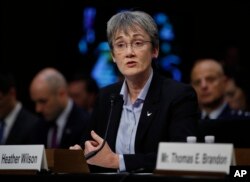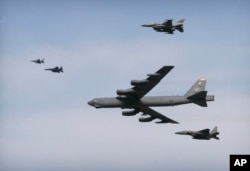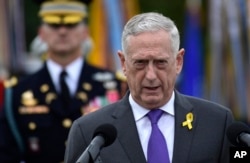The U.S. military needs more tanker aircraft squadrons to compete with a modernizing Chinese military, Air Force Secretary Heather Wilson said Wednesday.
“The challenge in the Pacific is the tyranny of distance, and that means tanker squadrons are very important,” Wilson told members of the Senate during a hearing Wednesday on Air Force readiness.
The Air Force recently announced plans to increase the number of tanker squadrons — needed to refuel military aircraft in flight — from 40 to 54 by 2030.
“When we project into the 2025, 2030 timeframe, our pacing threat, we believe, is China,” Wilson said.
The secretary’s comments follow recent U.S. military “freedom of navigation” operations, which dispute Chinese claims in international waters and promote free passage in waters where half the world’s merchant fleet tonnage transit.
U.S. Air Force B-52 bombers conducted transit operations in international airspace over the South China Sea and East China Sea last month, which the Pentagon called part of its “continuous bomber presence” in the region, and China called “provocative.”
The new tanker plans are part of proposed squadron increases across the Air Force. Wilson said the increases support the Trump administration’s new National Defense Strategy, which prioritizes great-power competition with China and Russia over counterterrorism efforts.
When Defense Secretary Jim Mattis rolled out the strategy in January, he cautioned the U.S. military was losing its competitive advantage over near-peer competitors.
“Our military is still strong, yet our competitive edge has eroded in every domain of warfare — air, land, sea, space and cyberspace — and is continuing to erode,” Mattis said.
Liberal and conservative critics have slammed recent increases in military spending for raising U.S. debt at a time when politicians should be cutting federal spending.
Mattis cautioned that Americans have “no preordained right to victory on the battlefield” and must pay the costs to remain the world’s strongest fighting force.
“It’s expensive. We recognize that. But it’s less expensive than fighting a war with somebody who thought that we were weak enough that they could take advantage,” he said.












